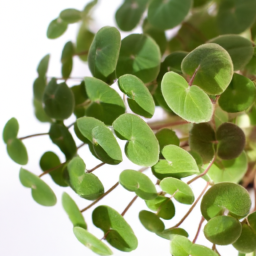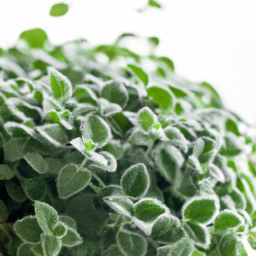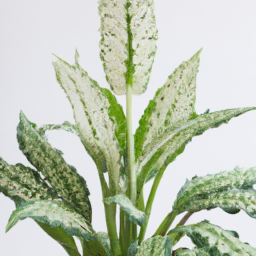
Are you looking to bring a touch of nature into your home? Adding plants to your living space can not only brighten up the room, but also improve air quality and create a calming atmosphere. In this blog post, we will explore different types of plants for home that are easy to care for and can thrive in indoor environments. Whether you have a green thumb or are new to plant parenthood, there is a perfect plant out there for you. Let’s dive in and discover the best plants to liven up your living space!
Benefits of Different Types of Plants for Home Decor
Indoor Plants
When it comes to choosing plants for your home decor, indoor plants are a popular choice for many reasons. Not only do they add a touch of nature to your living space, but they also have numerous benefits for your health and well-being. Indoor plants are known for their air-purifying properties, as they can help remove toxins from the air and improve indoor air quality. They also have a calming effect on the mind, which can help reduce stress and anxiety. In addition, indoor plants can add a pop of color and texture to your home decor, making your space feel more inviting and cozy.
When selecting indoor plants for your home, it’s important to consider factors such as lighting, humidity, and temperature. Some popular indoor plants that are easy to care for and can thrive in a variety of conditions include spider plants, pothos, and snake plants. These plants are known for their low maintenance requirements and ability to adapt to different environments. Whether you have a green thumb or are new to plant care, there is an indoor plant out there for everyone.
In addition to their health benefits, indoor plants can also help improve your mood and productivity. Studies have shown that having plants in your living space can boost your mood and increase feelings of happiness and well-being. They can also help reduce fatigue and improve concentration, making them a great addition to your home office or study area. So if you’re looking to enhance your home decor and improve your overall well-being, consider adding some indoor plants to your space.
Outdoor Plants
While indoor plants are a popular choice for home decor, outdoor plants can also have a significant impact on the look and feel of your living space. Outdoor plants can add curb appeal to your home, making it more inviting and visually appealing. They can also create a sense of privacy and seclusion, making your outdoor space feel like a peaceful retreat. Whether you have a small balcony or a spacious backyard, there are outdoor plants that can enhance the beauty of your outdoor space.
When choosing outdoor plants for your home, it’s important to consider factors such as sunlight, soil quality, and climate. Some popular outdoor plants that are easy to care for and can thrive in a variety of conditions include lavender, hydrangeas, and succulents. These plants are known for their beauty and resilience, making them a great choice for beginner gardeners and experienced plant enthusiasts alike. Whether you’re looking to add some color to your garden or create a lush oasis in your backyard, there are outdoor plants that can help you achieve your desired look.
In addition to their aesthetic benefits, outdoor plants can also have a positive impact on the environment. They can help reduce air pollution, provide habitat for wildlife, and improve soil quality. By incorporating outdoor plants into your home decor, you can create a more sustainable and eco-friendly living space. So if you’re looking to enhance the beauty of your outdoor space and make a positive impact on the environment, consider adding some outdoor plants to your home decor.
Succulents and Cacti
Succulents and cacti are a popular choice for home decor due to their unique appearance and low maintenance requirements. These plants are known for their ability to store water in their leaves and stems, making them well-suited for dry environments and neglectful plant owners. Succulents and cacti come in a variety of shapes, sizes, and colors, making them a versatile option for adding a touch of greenery to your home decor.
When caring for succulents and cacti, it’s important to provide them with plenty of sunlight and well-draining soil. These plants thrive in bright, indirect light and require minimal watering, making them ideal for busy individuals or those with a busy schedule. Some popular succulents and cacti that are easy to care for and can thrive in a variety of conditions include aloe vera, echeveria, and prickly pear cactus. Whether you’re looking to create a desert-inspired oasis in your home or add a modern touch to your decor, succulents and cacti are a great choice for indoor and outdoor spaces alike.
In addition to their low maintenance requirements, succulents and cacti have numerous health benefits. They can help improve indoor air quality, reduce stress, and boost your mood. Studies have shown that caring for plants can have a positive impact on mental health and well-being, making succulents and cacti a great addition to your home decor. So if you’re looking for a unique and easy-to-care-for plant option, consider incorporating succulents and cacti into your home decor.

Popular Indoor Plants for Home Gardens
Benefits of Indoor Plants
Indoor plants are not only aesthetically pleasing but also provide numerous health benefits. They help purify the air by removing toxins and releasing oxygen, creating a healthier indoor environment. Plants can also help reduce stress and improve mood, making your home a more relaxing and peaceful place to be. In addition, caring for plants can be a rewarding hobby that promotes mindfulness and a connection to nature.
Having indoor plants can also increase humidity levels in your home, which is especially beneficial during the dry winter months when indoor heating can cause the air to become too dry. This can help prevent issues such as dry skin, sore throats, and respiratory problems. Some plants, such as aloe vera and snake plants, can even be used for their healing properties, with aloe vera being known for its soothing gel that can be used to treat burns and cuts.
Incorporating indoor plants into your home decor can also help improve the overall ambiance of your space. Plants add color, texture, and life to a room, making it feel more inviting and cozy. They can be used to create focal points, add interest to empty corners, or simply brighten up a room. With so many different types of indoor plants to choose from, you can easily find ones that suit your personal style and preferences.
Types of Indoor Plants
When choosing indoor plants for your home, it’s important to consider factors such as light levels, humidity, and space constraints. Some plants require bright, indirect light, while others can thrive in low light conditions. If you have limited natural light in your home, consider plants such as pothos, peace lilies, or spider plants that can tolerate low light environments. On the other hand, if you have a sunny window or a well-lit room, you may opt for plants like succulents, orchids, or herbs that require more sunlight.
Humidity levels can also impact the health and growth of indoor plants. Tropical plants such as ferns, palms, and calatheas thrive in high humidity environments, making them ideal for bathrooms or kitchens. If your home has low humidity, you can use a humidifier or group plants together to create a microclimate that mimics their natural habitat. Additionally, some plants, like cacti and succulents, are well-suited to dry indoor conditions and require minimal watering.
Consider the size and shape of your space when selecting indoor plants. Tall, upright plants like fiddle leaf figs or snake plants are great for adding height and drama to a room, while trailing plants like pothos or ivy can be hung from shelves or macrame plant hangers to create a cascading effect. If you have limited floor space, consider using wall-mounted planters or small tabletop plants to bring greenery into your home without taking up too much room.
In addition to considering light, humidity, and space requirements, it’s important to choose plants that are safe for pets and children if you have them in your home. Some common houseplants, such as philodendrons, peace lilies, and snake plants, can be toxic if ingested, so it’s important to research the toxicity of plants before bringing them into your home. Alternatively, you can opt for pet-friendly plants like spider plants, Boston ferns, or air plants that are safe for furry friends and little ones.
Caring for Indoor Plants
Proper care and maintenance are essential for keeping indoor plants healthy and thriving. Most indoor plants require regular watering, but the frequency and amount of water can vary depending on the plant species, pot size, and environmental conditions. Overwatering is a common issue that can lead to root rot and other problems, so it’s important to allow the soil to dry out between waterings and ensure proper drainage in your pots.
In addition to watering, indoor plants may require regular fertilization to provide essential nutrients for growth. Use a balanced, water-soluble fertilizer according to the manufacturer’s instructions, typically once a month during the growing season. Some plants may benefit from occasional pruning to remove dead or yellowing leaves, promote new growth, or maintain a desired shape. Pruning can also help prevent pests and diseases by improving air circulation and reducing overcrowding.
Monitoring the health of your indoor plants is key to catching any issues early and preventing them from spreading. Keep an eye out for signs of pests such as spider mites, mealybugs, or aphids, as well as common plant diseases like powdery mildew or root rot. If you notice any problems, isolate the affected plant, remove any pests or diseased leaves, and treat with an appropriate insecticidal soap or fungicide. Regularly inspecting your plants for signs of stress or damage can help you address issues promptly and keep your indoor garden thriving.
By choosing the right types of indoor plants for your home, providing them with proper care and maintenance, and creating a suitable environment for them to thrive, you can enjoy the many benefits of having greenery indoors. Whether you’re a seasoned plant parent or just starting out, there’s a wide variety of indoor plants to choose from that can enhance your living space and bring a touch of nature into your home. So go ahead, pick out a few plants that speak to you, and start creating your own indoor oasis today!

Low-Maintenance Varieties of Plants for Home Settings
Choosing the Right Plants for Your Home
When it comes to selecting plants for your home, it’s important to consider the amount of care and maintenance they will require. If you’re looking for low-maintenance options that are easy to care for, there are several varieties that are perfect for home settings. One popular choice is the snake plant, also known as mother-in-law’s tongue. This plant is extremely resilient and can thrive in a variety of conditions, making it ideal for beginners or those with a busy schedule. Another great option is the spider plant, which is not only easy to care for but also helps to purify the air in your home. Lastly, the pothos plant is a popular choice for its trailing vines and ability to thrive in low light conditions.
When choosing plants for your home, it’s important to consider the amount of natural light available in each room. Some plants, like the snake plant and spider plant, can thrive in low light conditions, making them perfect for rooms with minimal sunlight. Others, like the pothos plant, prefer bright, indirect light and should be placed near a window. By taking the time to assess the lighting in each room, you can ensure that your plants will thrive and grow beautifully.
Caring for Your Low-Maintenance Plants
Once you’ve selected the perfect low-maintenance plants for your home, it’s important to establish a regular care routine to keep them healthy and thriving. One key aspect of plant care is watering – while some plants require frequent watering, others, like the snake plant and spider plant, prefer to dry out between waterings. It’s important to research the specific watering needs of each plant and adjust your routine accordingly.
In addition to watering, it’s important to regularly dust the leaves of your plants to remove any build-up of dust or debris. This will help to keep your plants looking vibrant and healthy. You should also periodically check for signs of pests or disease, such as yellowing leaves or sticky residue on the leaves. If you notice any issues, it’s important to address them promptly to prevent them from spreading to other plants.
Tips for Displaying Your Plants in Your Home
Once you’ve chosen your low-maintenance plants and established a care routine, it’s time to think about how to display them in your home. One popular option is to create a plant shelf or hanging plant display to showcase your plants and add a touch of greenery to your space. You can also mix and match different plant varieties to create a visually interesting display.
Another option is to use decorative planters or pots to add a pop of color or texture to your plant display. Consider using a mix of ceramic, terracotta, and woven planters to add visual interest to your space. You can also use plant stands or wall-mounted planters to create a vertical garden effect and maximize space in smaller rooms.
By following these tips and choosing the right low-maintenance plants for your home, you can create a beautiful and thriving indoor garden that will bring joy and tranquility to your space. Remember to regularly care for your plants and adjust your routine as needed to ensure that they continue to grow and thrive in your home.
Let’s wrap up what we learned
When it comes to bringing a little bit of nature indoors, there are plenty of plant options to choose from for your home. Some popular choices include succulents, which are known for their low maintenance and unique shapes and colors. These plants are perfect for those who may not have a green thumb or who are looking for a stylish addition to their space. Another great option is the spider plant, which is known for its air-purifying qualities and easy care requirements. These plants are perfect for beginners and can thrive in a variety of lighting conditions.
If you’re looking to add a pop of color to your home, consider investing in a peace lily or orchid. Both of these plants are not only beautiful to look at but also help to improve air quality in your home. For those looking for a touch of the tropics, a banana plant or bird of paradise can add a lush and exotic feel to any room. No matter your style or skill level, there is a plant out there for everyone to enjoy in their home. So go ahead, bring a little bit of the outdoors inside and enjoy the benefits of having plants in your living space.
Common Questions and Answers:
Q1: What are some low-maintenance plants suitable for a home environment?
A1: Some low-maintenance plants that are great for homes include pothos, snake plants, spider plants, and ZZ plants. These plants require minimal care and can thrive in various indoor conditions.
Q2: What are some flowering plants that can be grown indoors?
A2: Some flowering plants that can be grown indoors include orchids, peace lilies, African violets, and begonias. These plants can add a pop of color to your home while brightening up the space.
Q3: Are there any plants that are known for their air-purifying properties?
A3: Yes, there are several plants known for their air-purifying properties, such as aloe vera, spider plants, snake plants, and peace lilies. These plants can help improve indoor air quality by filtering out toxins.
Q4: What are some herbs that can be grown indoors for cooking purposes?
A4: Some herbs that can be easily grown indoors for cooking purposes include basil, parsley, mint, and chives. Having these herbs at home can add fresh flavors to your dishes.
Q5: Can you recommend some succulent plants that are suitable for indoor spaces?
A5: Sure! Some popular succulent plants that are great for indoor spaces include aloe vera, echeveria, jade plants, and haworthia. These plants are known for their unique shapes and require minimal watering.
Dr. Olivia Green is a botanist with over two decades of experience in indoor plant cultivation. She holds a Ph.D. in Plant Biology and has dedicated her career to researching plant behavior in controlled environments. Dr. Green is passionate about helping plant enthusiasts master the art of indoor gardening through her extensive knowledge and practical insights.


